The Matabele Campaign of 1893 - the march on Bulawayo
Dr Jameson may have decided on 18 July 1893 that the only solution was a military one, [i ] the actual Matabele Campaign only began on 5 October, the day on which Sir Henry Loch, the High Commissioner of Southern Africa, telegraphed his permission for the three columns to move from Salisbury (now Harare) Victoria and Tuli. The months of August, September and October 1893 were spent making preparations for the Matabele Campaign. Within a month, on 4 November the combined Salisbury and Bulawayo columns marched into Bulawayo, the royal capital of Lobengula who had fled to the north, and the Campaign, apart from the pursuit of the King, was over.
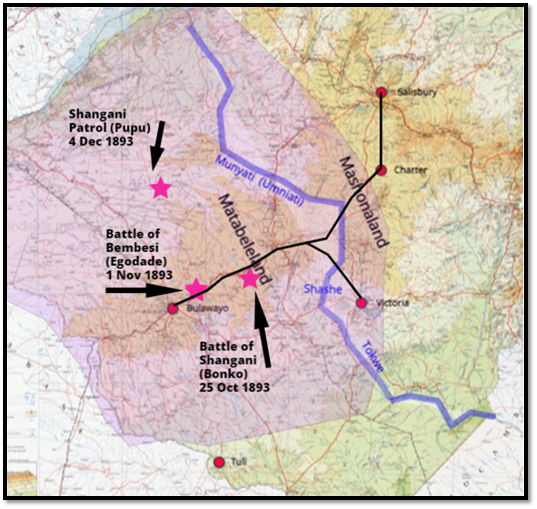
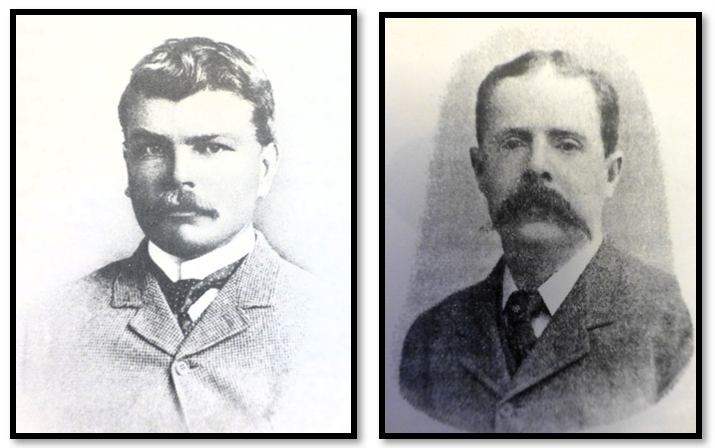
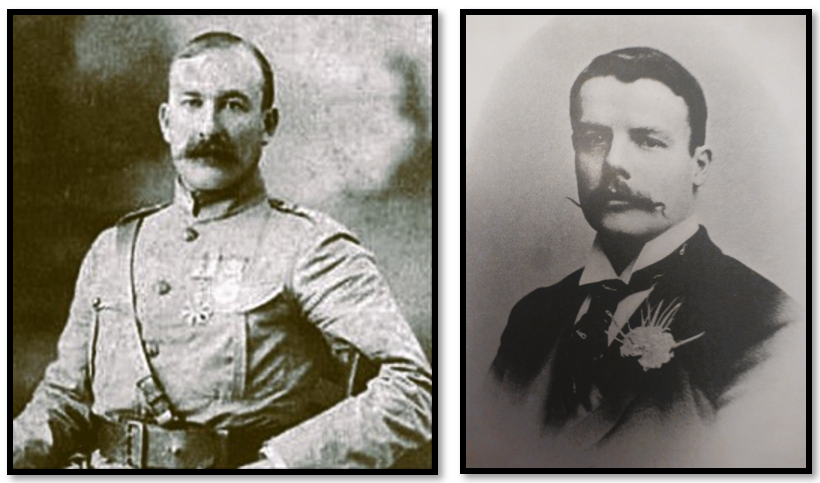
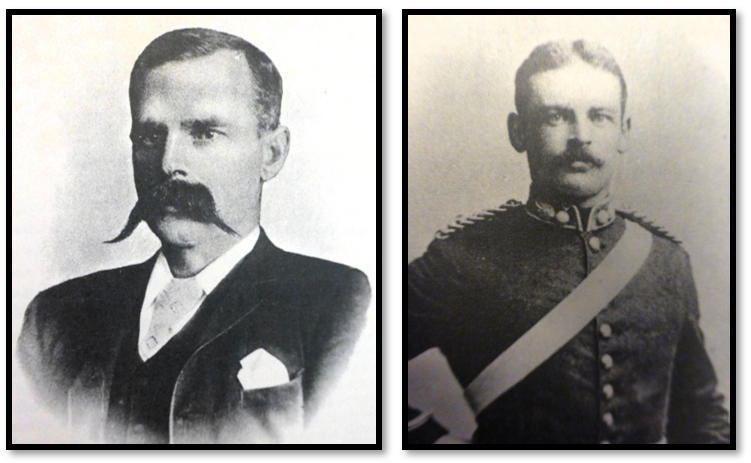
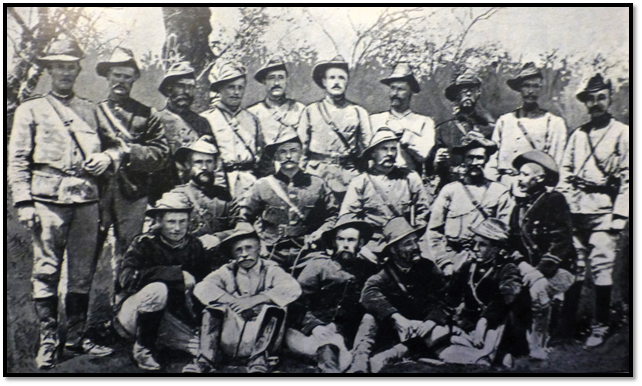
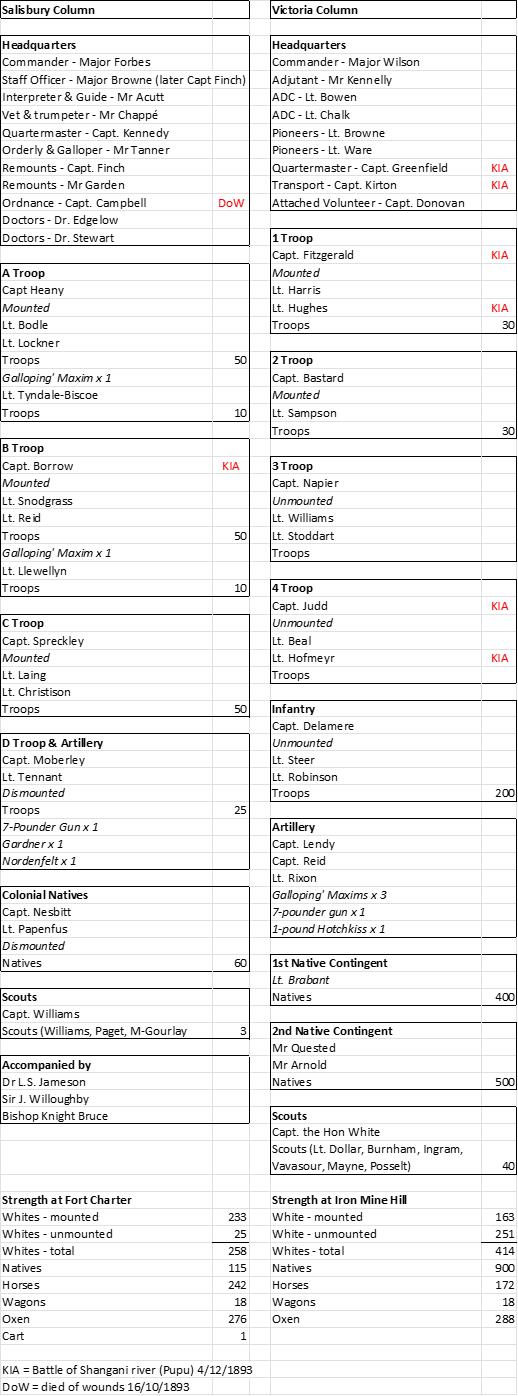
Against them Oliver Ransford estimates that Lobengula had 15,000 warriors. (Bulawayo, Historic Battleground of Rhodesia, P54)
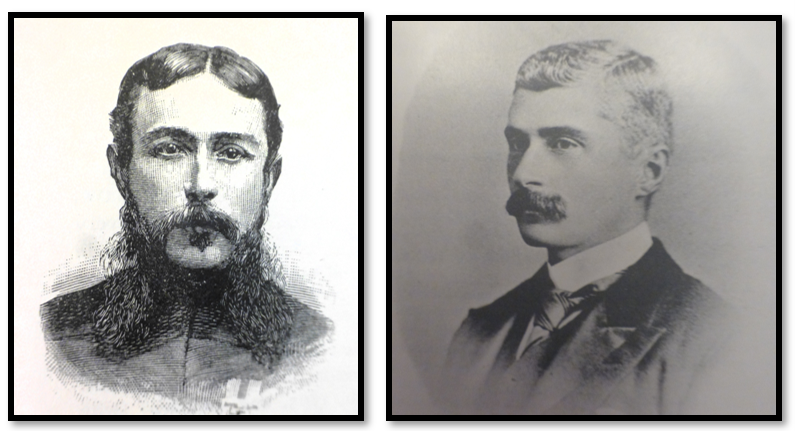
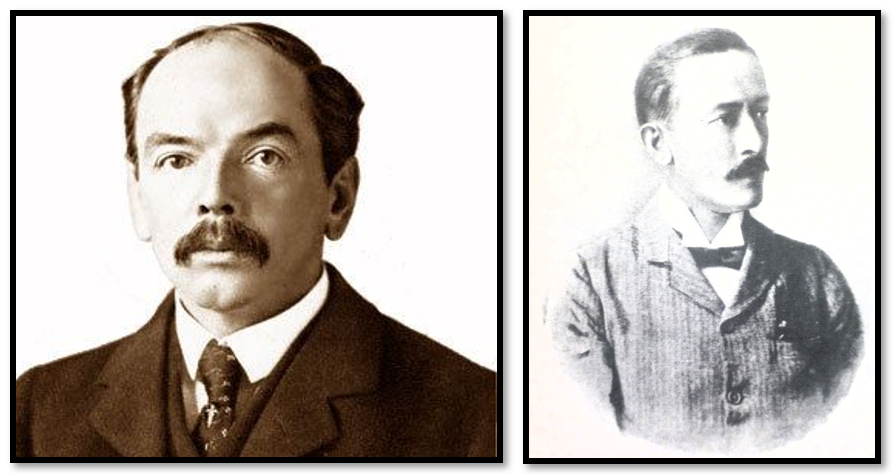
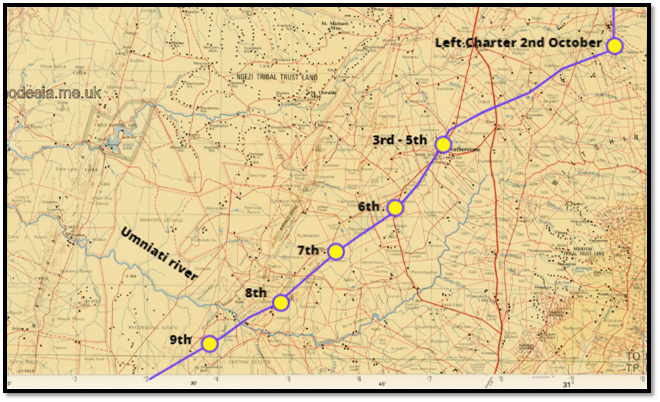
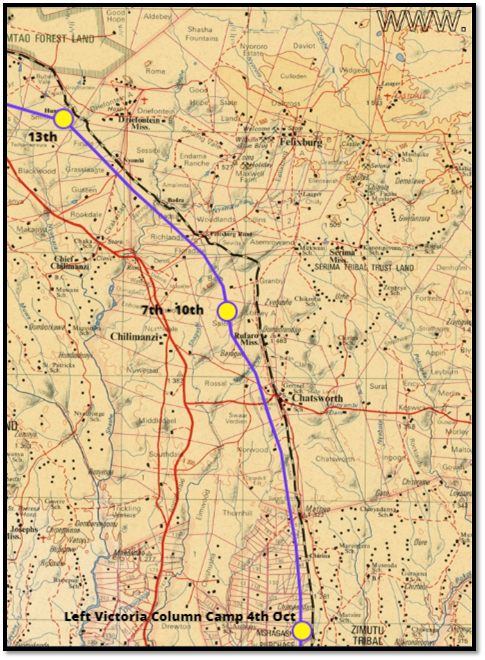
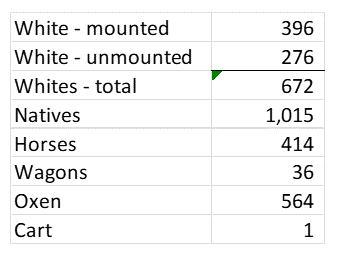
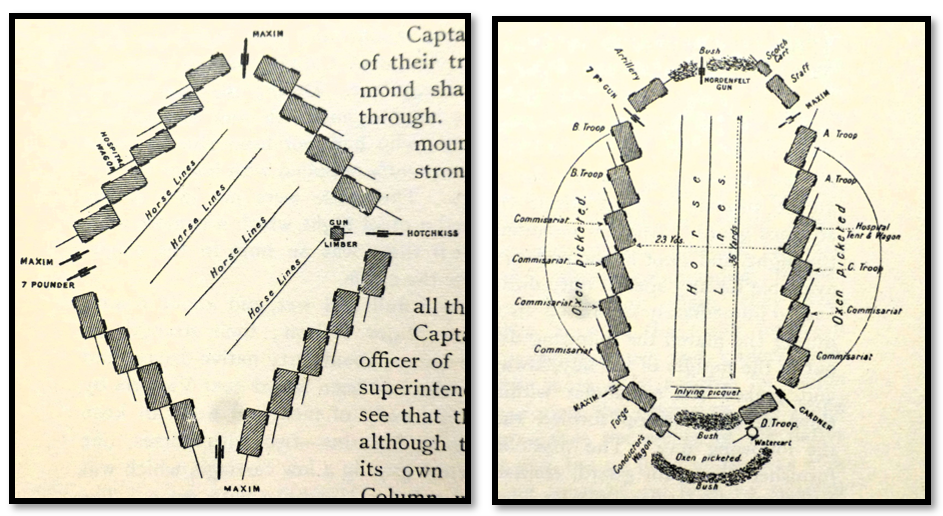
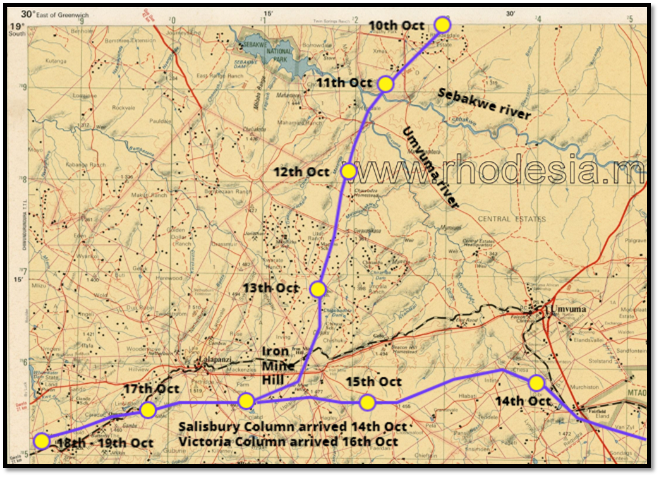
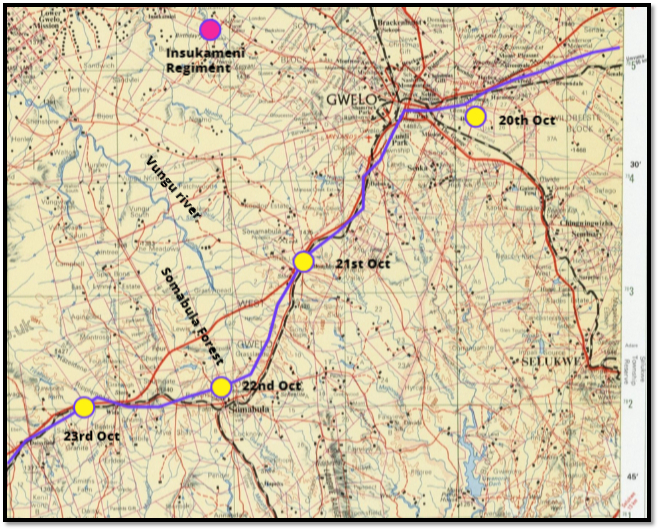
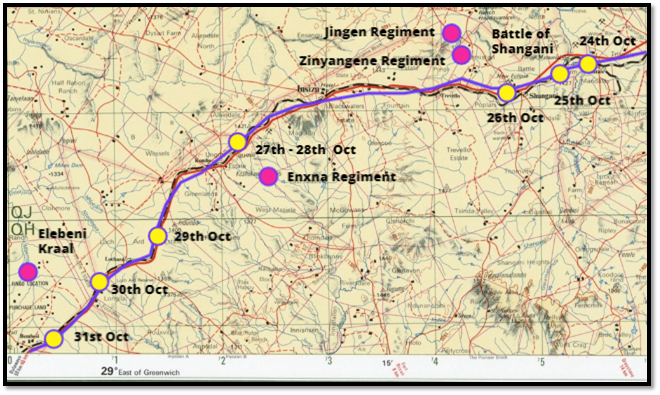
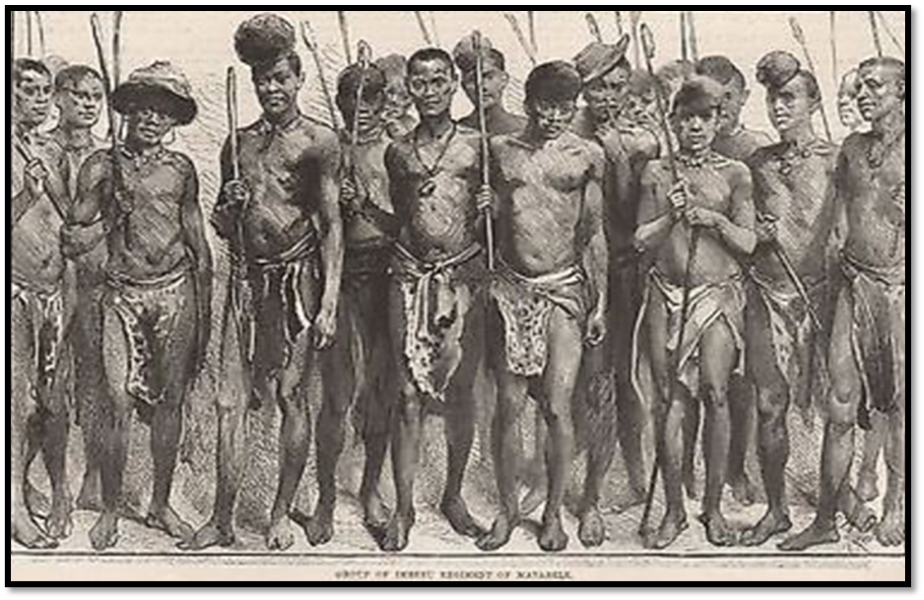
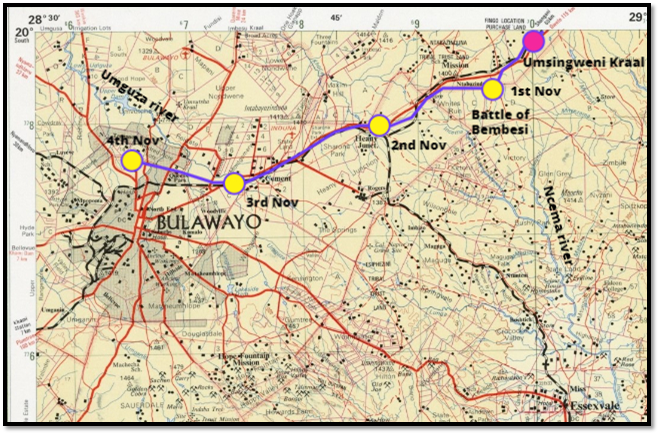
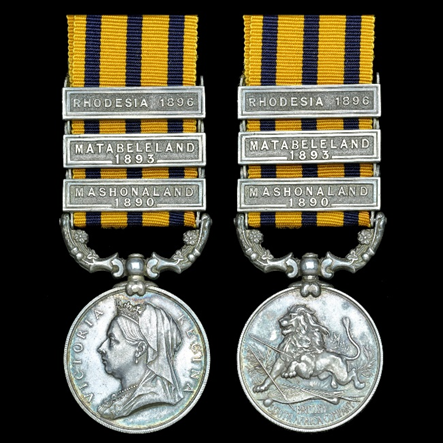
O. Ransford. Bulawayo, Historic Battleground of Rhodesia. A.A. Balkema, Cape Town 1968
I. Tomes. The Matabele War 1893. Heritage of Zimbabwe, Publication No 17, 1998, PP18-73
[i] See the article The 1893 Matabeleland campaign and the roles played by Jameson, Lobengula, Loch and Rhodes under Masvingo on the website www.zimfieldguide.com
[ii] Capt P.W. Forbs of the6th Inniskilling Dragoons was the first officer appointed to the Pioneer Corps on 16 November 1899 and it was only on 1 May 1890 that Lieut-Col E.G. Pennefather was appointed in overall command of the BSACo Police and the Pioneer Corps
[iii] BSACo Police numbers had been built up with the need for a strong force to deter the Portuguese in the East and Boer threat from the South, but after July 1891 both threats had been solved and in September / October many Police were discharged to reduce expenses. In October 1891 Rhodes came to the country for his first visit and to discuss with Dr Jameson the subject of finance, particularly the heavy cost of the Police. Marshall Hole writes, “the most ruinous item of expenditure was the cost, amounting to about £150,000 a year, for the police force which the Imperial authorities required the Company to maintain…In the long run it was arranged to raise a force of volunteers at Salisbury and Victoria and to reduce the Police from 650 to 150 of all ranks. And Jameson promised Rhodes to effect the change by the end of 1891.”
[iv] The volunteers conditions set out by the committee in Victoria on 14 August 1893 and agreed by Dr Jameson to apply to the whole force were as follows:
(a)Protection on all Mashonaland claims until six months after the war finished
(b)A farm of 3,000 morgen (6,000 acres) free of occupation with a quitrent of ten shillings a year
(c)Fifteen gold claims on reef and five alluvial
(d)Share of all the cattle taken, 50% of which would go to the BSACo, the remaining share divided equally amongst all members
[v] The Maxim gun was adopted by the British army in 1889. Fed with the same ‘577/450 cartridges used by the Martini-Henry rifle it could fire 600 shots a minute. The versions used by the columns were mounted on gun carriages, hence ‘galloping Maxim’ and were considered the ultimate machine gun at the time. The ammunition was still not smokeless and this often caused a problem if there was little wind to blow away the smoke.
[vi] Rhodes himself paid most of the costs of the military campaign, about £50,000
[vii] The Downfall of Lobengula, P191
[viii] Ibid, P217
[ix] Transport riders typically carried 8,000 lbs on an ox-wagon
[x] The Shashe river in Mashonaland is a tributary of the Tokwe river and not to be confused with the river of the same name that forms a tributary of the Limpopo river
[xi] Ntabasinsimbe is where the Salisbury and Victoria columns have agreed to meet, but the hills Forbes refers to are actually the Mwenezi Range, 14 miles (23 km) south of present-day Featherstone and they are trekking south west to the Umniati (Munyati) river, not due west
[xii] The Matabele War, P176
[xiii] Finland Farm 6 miles (10 km) south east of Lalapanzi
[xiv] For details of Captain Campbell’s grave see the article Iron Mine Hill (Ntabasinsimbe) and the first casualty of the 1893 Matabele War under Midlands province on the website www.zimfieldguide.com
[xv] Rhodesian Genesis, P84
[xvi] The Matabele War, P193
[xvii] See the article Iron Mine Hill (Ntabasinsimbe) and the first casualty of the 1893 Matabele War under Midlands on the website www.zimfieldguide.com
[xviii] The Downfall of Lobengula, P95
[xix] Albert Edward Burnett was the chief Transport Officer of the 1890 Pioneer Corps and took over as Intelligence Officer when Selous resigned on 26 August 1890. Prospected and mined in Mashonaland after the disbandment of the Pioneer Corps and served in the Salisbury column in 1893 as a volunteer but without rank. Killed on 23 October 1893 when patrolling and buried on the south bank of the Shangani river near the old main road.
[xx] Rhodesian Genesis, P84-5
[xxi] News of Capt Williams death was only received a week or two later. His horse had been wounded in the flank and became uncontrollable, he got into hilly country, the amaNdebele followed until his horse fell and he dismounted. He kept them at bay from about 200 yards with his M.H. rifle but was finally shot in the head and killed. Forbes states he was a great loss having been a Captain in the Royal Horse Guards.
[xxii] The reports of Gambo’s forces attacking the Southern Column were true. See the article The Southern Column’s skirmish at the Singuesi river on 2 November 1893 revisited under Matabeleland South province on the website www.zimfieldguide.com
[xxiii] The Matabele War, P222
